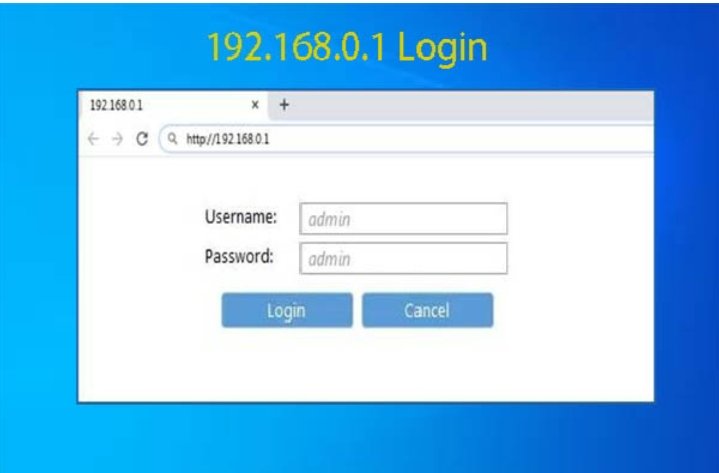Introduction
If you’ve ever tried setting up or troubleshooting your Wi-Fi router, you might have come across the IP address 192.168.100.1. This private IP is commonly used by various routers and modems as their default gateway. Knowing how to use it can help you configure your internet connection, secure your network, and even solve common connectivity problems.
In this ultimate guide, we’ll cover everything you need to know about 192.168.100.1, from logging in to advanced router settings.
What is 192.168.100.1?
192.168.100.1 is a private IPv4 address reserved for local networks. Unlike public IP addresses that connect you to the internet, private IPs are used within a home or office network.
- Purpose: Acts as the default gateway for routers/modems.
- Scope: Only accessible inside your local network.
- Common Manufacturers: Huawei, Arris, TP-Link, Netgear, and some cable modems.
👉 Simply put: typing http://192.168.100.1 in your browser takes you to your router’s login page.
How to Log in to 192.168.100.1
Follow these steps to access your router’s admin panel:
- Connect to your network (via Wi-Fi or Ethernet).
- Open a web browser (Chrome, Firefox, Edge, etc.).
- Type http://192.168.100.1 in the address bar and press Enter.
- You’ll see a login page.
- Enter your username and password. (Default credentials are often printed on the router’s label, such as admin/admin or admin/password.)
- Click Login to access the dashboard.
⚠️ If the page doesn’t load, your router may use a different IP (like 192.168.1.1 or 192.168.0.1).
Default Login Credentials for 192.168.100.1
Each brand has its own factory-set credentials. Here are common ones:
| Brand | Username | Password |
| Huawei | admin | admin |
| TP-Link | admin | admin |
| Arris | admin | password |
| Netgear | admin | password |
| Cisco | admin | admin |
👉 Tip: Always change the default password after first login to protect your network.
Common Settings You Can Configure
Once logged in, you can customize various settings:
- Wi-Fi SSID & Password – Rename your Wi-Fi and set a strong password.
- Security Settings – Enable WPA3/WPA2 encryption.
- Parental Controls – Limit internet access for specific devices.
- Port Forwarding – Useful for gaming or hosting servers.
- Firmware Updates – Keep your router secure with the latest updates.
- Connected Devices List – See all devices using your Wi-Fi.
Troubleshooting 192.168.100.1 Login Issues
Sometimes, you may face problems accessing the page. Here’s how to fix them:
- Page Not Loading → Make sure you’re connected to the correct router. Try 192.168.0.1 or 192.168.1.1.
- Forgot Password → Reset the router by holding the reset button (10–30 seconds).
- Slow Dashboard → Clear browser cache or try another browser.
- Blocked Access → Your ISP may have disabled direct login. Contact support.
Security Best Practices
Your router is the gateway to your entire network. Follow these tips:
- Change default admin credentials.
- Use a strong Wi-Fi password (mix letters, numbers, symbols).
- Disable remote management unless required.
- Regularly update router firmware.
- Hide SSID broadcasting (optional for extra privacy).
Comparison: 192.168.100.1 vs Other IPs
| IP Address | Usage | Common Brands |
| 192.168.0.1 | Router login | D-Link, Netgear |
| 192.168.1.1 | Router login | TP-Link, Linksys |
| 192.168.100.1 | Cable modems & routers login | Huawei, Arris, ISP |
| 10.0.0.1 | Business/enterprise networks | Cisco, Comcast |
👉 In short: 192.168.100.1 works just like 192.168.1.1 but is preferred by some ISPs and modem manufacturers.
Frequently Asked Questions (FAQs)
Q1: What if 192.168.100.1 doesn’t work?
➡ Try 192.168.1.1, 192.168.0.1, or check your network’s default gateway via ipconfig (Windows) or ifconfig (Mac/Linux).
Q2: Can I change my router’s IP from 192.168.100.1?
➡ Yes, you can, under LAN settings. But avoid conflicts by keeping it within private IP ranges.
Q3: Is 192.168.100.1 safe to use?
➡ Yes, it’s a private IP address and cannot be accessed from outside your local network.
Q4: How to reset router settings?
➡ Press and hold the reset button for 10–30 seconds until lights blink.
Final Thoughts
The IP address 192.168.100.1 is your key to controlling your router and managing your home network. Whether you want to secure your Wi-Fi, set parental controls, or troubleshoot connectivity, understanding how to use this IP address gives you full control.
By following this guide, you can:
- Log in to your router easily.
- Change important settings for better security.
- Fix common login and connection issues.
- Keep your home network safe from unauthorized access.
So, the next time your internet slows down or you need to change your Wi-Fi password, remember that 192.168.100.1 is your starting point.
Read also more:thisvidscat.org/2025/08/17/decoding-185-63-2253-200-invalid-ip-addresses-networking-impact/








